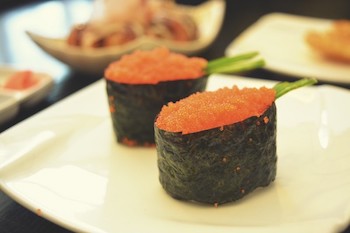We are reader supported. When you purchase through links on our site, we may earn an affiliate commission. Also, as an Amazon affiliate, we earn from qualifying purchases.
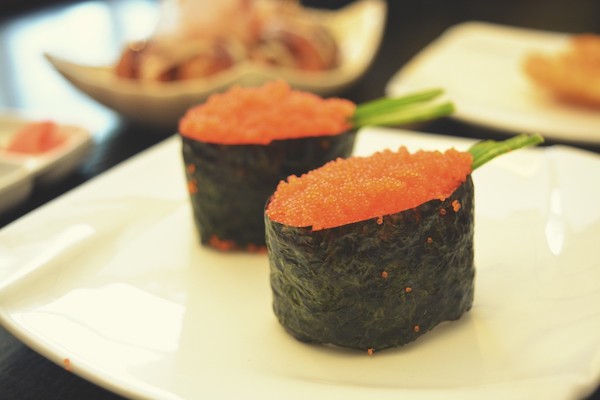
Fish roes are a common and popular garnishing on sushi. They are added on top of the sushi roll and stand out thanks to their vibrant colors. These fish roes are essentially fish eggs that have not yet hatched.
There are diverse types of fish roes, and each type is named after the fish from which it is harvested. To this end, smelt fish roe are fish eggs harvested from Capelin, a type of fish that originates from the Smelt species.
What are the Different Properties of Smelt Fish Roe?
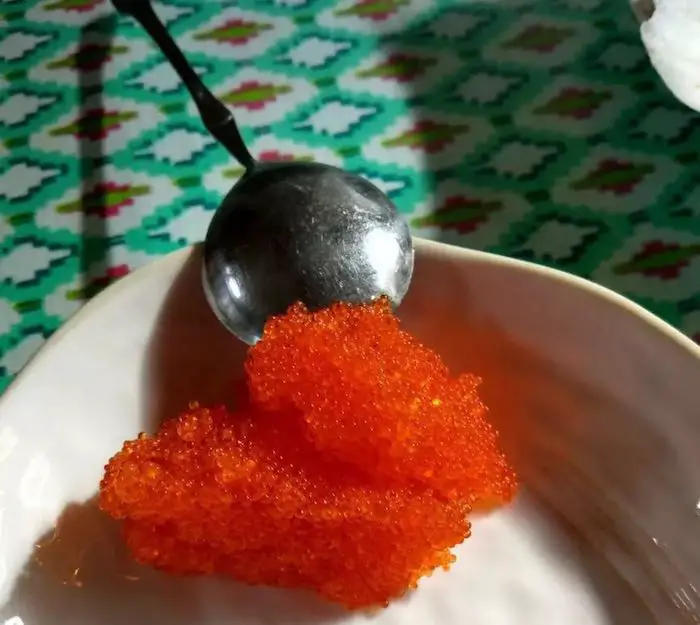
Smelt fish roe is also known as masago in Japanese. It is one of the most common and popular fish roes. As mentioned, it is harvested from capelin. Capelin fish have their habitat in the Atlantic and Arctic oceans. However, like salmon, capelin swims to fresh water streams to spawn.
Appearance
Smelt fish roe is pale-orange in color when fresh, but you will notice that it appears bright-orange, black, or red when served. This is because it is dyed and marinated before distribution to give it the attractive appearance.
Size
Smelt fish roe is about 1 millimeter in diameter, and some are as small as 50 millimeters depending on when and where they were harvested.
Taste and Texture
Smelt fish roe packs a mildly salty and smoky taste. They may also taste bitter at times depending on maturity. In either case, they do a great job of adding flavor to all types of sushi. Their texture is crisp and they feel great in the mouth.
Nutrition
Smelt fish roe is not only delicious but also nutritious. It packs a wide range of nutrients albeit in small quantities. It is especially rich in Omega-3 fatty acids – these fatty acids help improve cardiac health, boost cognitive health, help with weight control, and reduce inflammation. These eggs are also rich in vitamin D – in fact, they are among the few natural sources of vitamin D. vitamin D has a wide range of health benefits and helps relieve conditions such as anxiety, fatigue, insomnia, and depression, among others.
Other nutrients found in smelt fish roe include selenium, magnesium, iron, sodium, protein, calories, and phosphorus, among others.
Other Types of Popular Fish Roe Served with Sushi
Smelt fish roe is not the only type of fish roe served with sushi. Other common fish roe that you will find in sushi restaurants include:
Tropical Flying Fish Roe (Tobiko)
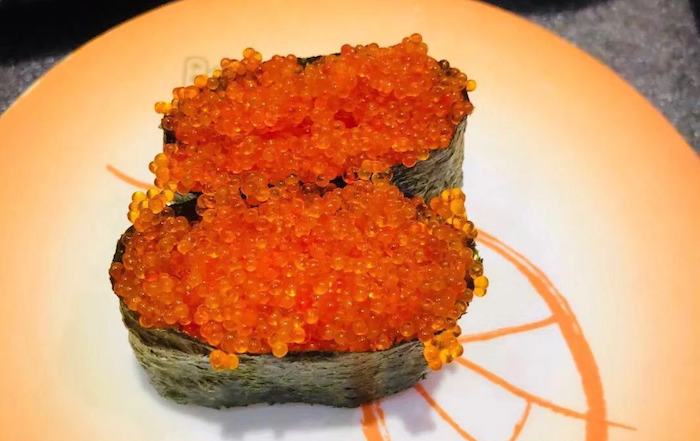
It is easy to confuse flying fish roe with smelt fish roe. Flying fish roe, also known as tobiko in Japanese, closely resembles masago in appearance and taste. It measures less than 1 millimeter in diameter – it is smaller than masago. It also packs a mildly smoky and salty taste and a sticky and crisp texture. It is also just as nutritious and is rich in vitamins, protein, and omega-3 fatty acids – it is also rich in cholesterol and as such should be consumed in moderation.
However, tobiko is slightly different from masago. For starters, its red-orange color is naturally bright and doesn’t need marinating or dying like masago – it is theorized that its naturally bright color comes as a result of the flying fish’s natural habitat and spawning regions. Tobiko also packs a more distinct taste compared to masago – it is not bitter as is the case with masago, but rather somewhat sugary and sweet. Its texture is also crunchier compared to masago.
However, the most notable difference between masago and tobiko is price – tobiko is one of the most expensive fish roes. To this end, many unscrupulous sushi restaurants tend to pass off masago as tobiko to unsuspecting diners.
Salmon Roe (Ikura)
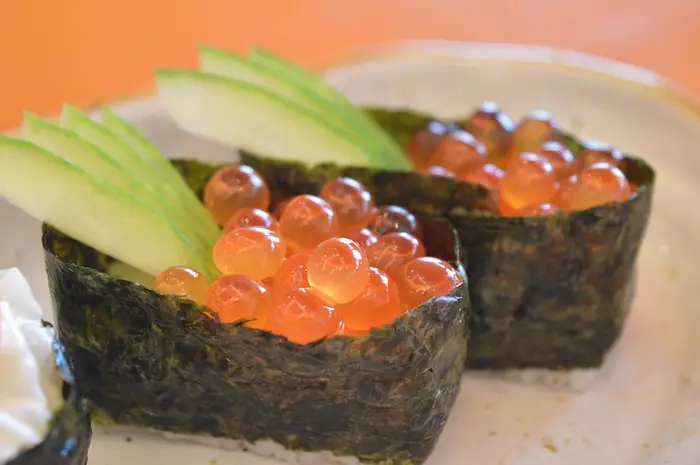
Salmon roe is the most common and popular of all fish roes served with sushi. This is partly because it looks and tastes good, and also because it is easily available and affordable.
Salmon roe, also known as ikura in Japanese, is larger in size than all other fish roes. It is orange in appearance and gooey in texture. It is also softer – so soft in fact that you risk bursting it open if you do not handle it with care. It is mostly used for decorative purposes but is also delicious albeit its tastes are not as distinct as for the other fish roes. Salmon roe can be consumed as topping on sushi or prepared as sashimi.
Salmon roe is also nutritious. It is especially rich in omega-3 fatty acids that are good for the heart. Other nutrients you will find in ikura include vitamins, minerals, and protein.
Related Questions
Q: How are the different types of fish roes harvested?
A: There are two ways to harvest fish roe: from the water sometime after spawning, or directly from the fish. Some fish eggs are too delicate to harvest from the water and hence have to be removed from the fish. For conservation purposes, harvested fish as either consumed or used to produce fish oil and other related products.
Q: Are all fish roes real?
A: Yes, all types of fish roe served as toppings on sushi are real. It is understandable why some people have doubts considering their vibrant colors and shapes, but they are all real. However, it is easy to confuse one type of fish roe for another as is the case with masago and tobiko.
Q: Is the dye used on some types of fish roe harmful to the health?
A: The dye used to enhance the colors of some types of fish roe, such as masago, is perfectly healthy and approved for human consumption. In fact, some sushi chefs use a natural dye such as squid ink.
Q: Are there any side-effects to eating fish roe?
A: Fish roe is recommended and healthy in moderate amounts. These eggs are highly nutritious in omega-3 fatty acids and a range of minerals and vitamins. However, some types of fish roe also contain mercury and cholesterol. As such, it is always advised to eat fish roe in moderation.
Related Article: Can You Get Worms From Sushi?

